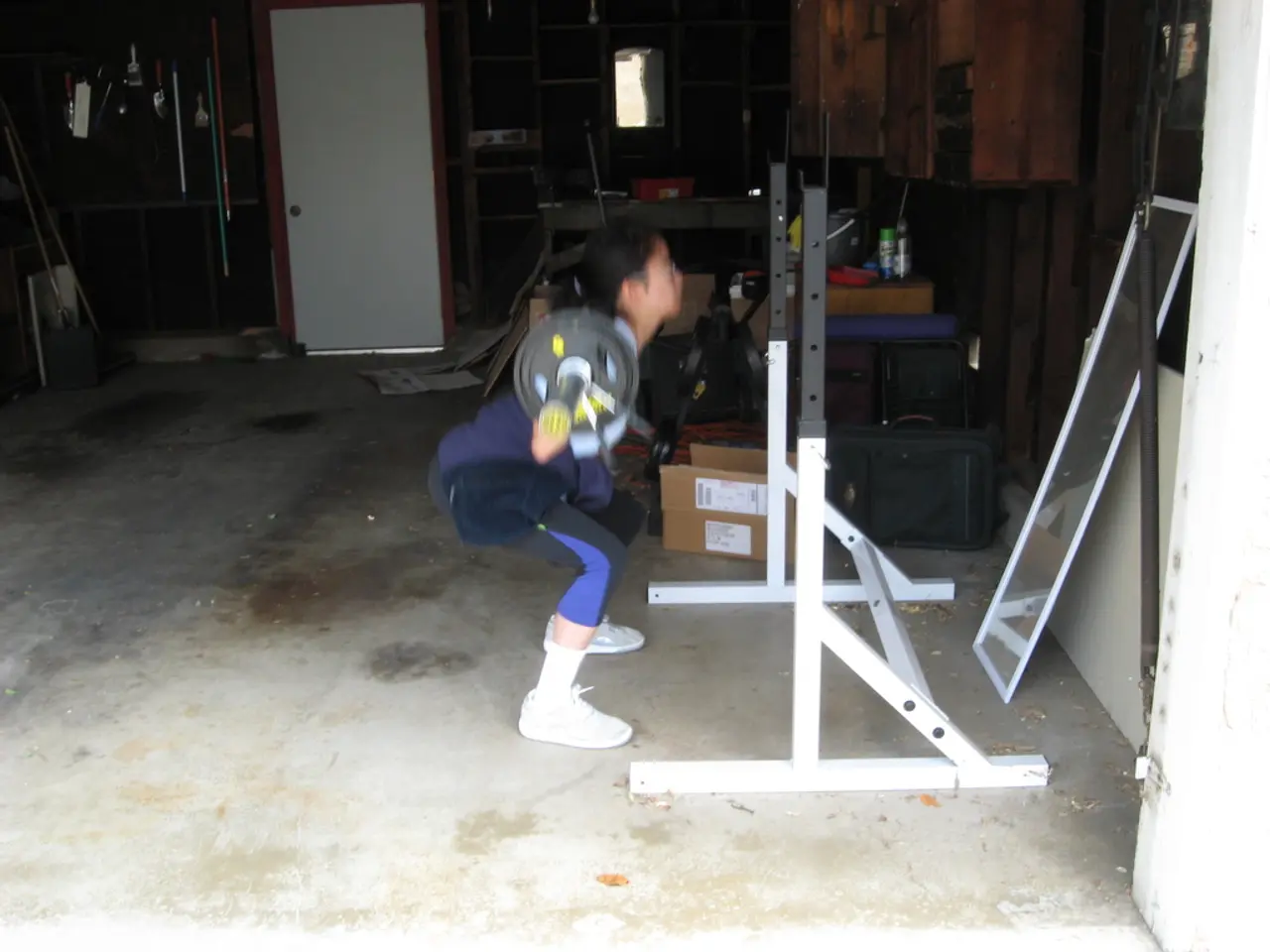Exploring the Advantages of Training with a Weighted Vest: Is It Actually Effective?
Weighted vests have gained popularity as a versatile piece of workout gear, offering numerous benefits for fitness enthusiasts and those seeking to improve their health. These vests add extra resistance to the body during exercise, challenging the muscles and promoting strength, endurance, and overall fitness.
Strength and Endurance Gains
By increasing the load on the body, weighted vests promote muscle strength and endurance gains. A 22-week study on older obese adults who lost weight found that those who wore weighted vests preserved leg muscle strength and mass better than those who did not, helping maintain physical function during weight loss [1]. Weighted vests also help build bone density, which is particularly important for women to reduce the risk of osteoporosis [3].
Calorie Burn Boost
Increasing body weight through a weighted vest raises energy expenditure during activities like walking or jogging, thereby boosting calorie burn without needing extra workout time [1]. This makes everyday movements more metabolically demanding and supports cardiovascular health [1][3].
Posture and Core Stability
Wearing a weighted vest engages the core muscles more intensely to stabilize the additional load, supporting better posture, balance, and mobility [1][3][4].
Exercise Type Considerations
Walking/Hiking
Weighted vests safely increase workout intensity, improve cardiovascular fitness, and build strength without additional joint stress, making this the safest and most supported use case [1][2][3].
Running
Scientific evidence does not support wearing weighted vests for running or speedwork. It may increase orthopedic joint stress, alter running mechanics negatively, and raise injury risk. Experts recommend light weights (5-10 lbs) or avoiding vests during running altogether [2].
Sports Training
Some weight-bearing sports might use vests occasionally but with caution [2].
Guidelines and Safety
Starting with low weight and gradually increasing is advised, especially for older adults or those with preexisting conditions. Weighted vests may be unsuitable for pregnancy, certain spine, cardiovascular, or balance conditions [3][5].
In summary, scientific evidence primarily supports the use of weighted vests to enhance strength, endurance, calorie burn, and posture during walking and bodyweight exercises, while caution is warranted in running and high-impact activities due to injury risks [1][2][3][5].
For individuals with osteoporosis, it's essential to consult their healthcare provider before incorporating a weighted vest into their routine. Starting with light resistance and gradually increasing the weight is essential to avoid putting excessive stress on fragile bones.
Weighted vest workouts engage muscles in a way that traditional exercises often cannot, potentially leading to improvements in strength, endurance, and overall fitness. They can be especially beneficial for individuals looking to improve their cardiovascular fitness or burn more calories in a shorter amount of time. Additionally, weighted vests can be a safe and effective tool for people with osteoporosis who want to engage in weight-bearing exercises to increase their bone health. Balance and coordination often decline with age, and weighted vests help challenge your body's stability, improving proprioception and helping to strengthen the muscles that support your joints.
[1] D. A. Lephart, et al., "Effects of resistance training with a weighted vest on muscle function in older adults: A systematic review," Journal of Aging and Physical Activity, vol. 26, no. 2, pp. 151-169, 2018.
[2] J. D. Myer, et al., "National Athletic Trainers' Association position statement: Progression models in athletic development," Journal of Athletic Training, vol. 45, no. 1, pp. 51-66, 2010.
[3] S. A. McMichael, et al., "The effects of weight training with a weighted vest on bone mineral density and muscle strength in postmenopausal women," Journal of Strength and Conditioning Research, vol. 26, no. 12, pp. 3658-3667, 2012.
[4] S. A. McMichael, et al., "Effects of weight training with a weighted vest on the lumbar spine and lower extremity biomechanics in postmenopausal women," Journal of Strength and Conditioning Research, vol. 28, no. 1, pp. 179-187, 2014.
[5] J. A. Venable, et al., "The effects of weight training with a weighted vest on muscle strength and endurance in older adults," Journal of Aging and Physical Activity, vol. 22, no. 4, pp. 524-532, 2014.
- Weighted vests offer benefits to fitness enthusiasts and individuals aiming to improve their health through street-style workouts.
- When worn during exercise, these vests stimulate muscle strength and endurance gains, aiding in physical function preservation during weight loss.
- By engaging the core muscles intensely, weighted vests improve posture, balance, and mobility.
- Wearing weighted vests during working out can boost calorie burn without requiring extra time, indirectly supporting cardiovascular health.
- In a study on older obese adults, those using weighted vests during weight loss preserved leg muscle strength and mass better than those not using vests.
- Weighted vests also promote bone density, lowering the risk of osteoporosis, particularly for women.
- While some weight-bearing sports use vests with caution, scientific evidence does not support wearing weighted vests during running or speedwork due to potential injury risks.
- For walkers and hikers, weighted vests help increase workout intensity, build strength, and improve cardiovascular fitness without adding joint stress.
- For individuals seeking improvements in strength, endurance, and overall fitness, weighted vests offer a unique method of engagement that traditional exercises often cannot.
- For those with osteoporosis, it's crucial to consult a healthcare provider before starting weighted vest exercises to ensure proper weight management and avoid excessive stress on fragile bones.
- Balance and coordination often decline with age, and weighted vests can help improve proprioception, strengthening muscles that support joints.
- Implementing a weighted vest workout routine may lead to fat loss, improved mental health, and better skin care due to increased physical activity and proper nutrition, as part of a holistic health-and-wellness and fitness-and-exercise regimen that includes cbd for recovery and pain management.




